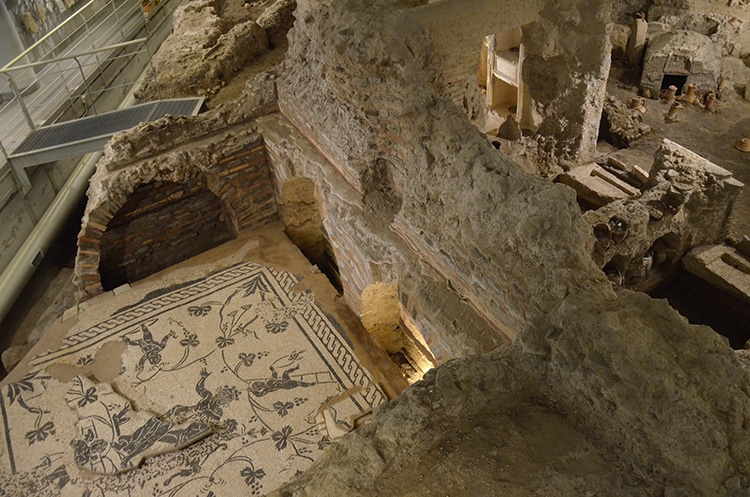The necropolis, which is now open to the public.
(Photo: Carole Raddato viaWikimedia Commons,CC BY-SA 2.0 DEED)
Vatican City is a unique place.
In ancient Rome, bodies of the deceased could not be buried or cremated inside the city walls.

The necropolis, which is now open to the public. (Photo: Carole Raddato viaWikimedia Commons,CC BY-SA 2.0 DEED)
So on the outskirts of the metropolis formed a series of necropolis where the ancients were laid to rest.
Many lay in small mausoleum structures clustered along Rome’s epic roadways, including the Via Triumphalis.
Along this road lies the 10,764-square-foot necropolis which is technically now under Vatican City.
The public can enter through the Saint Rose Gate in the walls of the Vatican.
Exposed to view are countless mosaics, featuring geometric designs and motifs of the Roman gods.
Niches and archways give a sense of the full structures which once existed.
Even frescoes remain, decorating for eternity the last resting places.
The deceased were buried between the 1st century CE and the 4th century CE.
Sarcophagi remain, as do some exposed skeletons.
Funerary stelae tell us about these people and their ordinary lives.
Among the interred are a Pompeii theater manager and a saltuarius, who took care of woodlands.